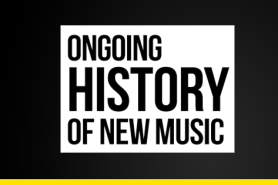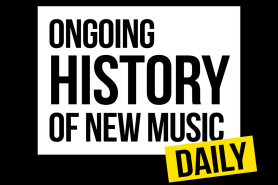Days before Oasis rolled into town last month, a pop-up store opened on Queen Street West selling tour-related merchandise. When I rolled past, lines snaked around the block in two directions, with fans gobbling up everything from posters (a bargain at $35) to T-shirts ($65) to Oasis-branded Adidas gear ($155 and up).
At the show at Rogers Stadium on Aug. 25, it seemed that half the crowd had come wearing Oasis kit, while the other half was lined up at the many merch stands.
The supply chain logistics for Oasis merch must be as complicated as the tour itself. Even then, many items sold out quickly. Bucket hats have been especially popular. The group will reportedly rake in a minimum of 20 million pounds just from selling swag this year.
(Fun fact: Another report says that Oasis fans drink so much that the band was able to strike a deal to grab 4 pounds for each 8-pound pint that was sold at their gigs in the U.K. That must have been a staggering sum.)
Oasis isn’t the only band reaping windfalls from merch. Metallica and The Who recently sucked in millions with pop-up stores. At his touring peak, it’s been said that Justin Bieber pulled in $300,000 a night in merch sales.
And Taylor Swift’s Eras Tour? The estimate is that in 2023 alone, her revenues topped US$200 million. For the entire tour, she sold about US$2 million per show. Go ahead, extrapolate that number through to the end of the tour in December 2025.
Obviously, this is big business. But who invented the idea of artist merchandise in the first place? We’re talking T-shirts, programs, posters and all the tchotchkes with logos.
Credit has to go to Elvis Presley’s manager, Colonel Tom Parker. He began selling Elvis-related merch in the mid-1950s when he signed a deal with a Beverly Hills company for $40,000. Within weeks, Elvis-themed swag was everywhere. Among the 50 or so items were shirts, scarves, sneakers, hats and even lipsticks. The Colonel was even shrewd enough to clandestinely sell “I Hate Elvis” buttons to people who weren’t on board with the King of Rock ‘n’ Roll.
But it was really Brian Epstein, the manager of The Beatles, who invented modern swag selling. In 1963, he entrusted the Beatles’ lawyer, a man named David Jacobs, to handle it. Jacobs found a guy named Nicky Byrne, and together they issued official licences to companies who wanted to make Beatles merch — for 10 per cent of the profits.
It got a little crazy. One company asked if they could sell Beatles basthwater at a dollar a bottle. They said no. But they did sell 35,000 Beatles wigs per day. One hundred thousand Ringo dolls were sold in two days. And a company in Blackpool received an order for 10 million pieces of licorice stamped with “The Beatles.”
By August 1964, The Beatles were so hot that the cost of licences jumped from 10 per cent to 46 per cent. But people being the thieves they are, the band saw very little of this money. Still, lots of income was generated — for, well, someone.
Band T-shirts became very popular through the ’60s, with lots of tie-dye at festivals. In the ’70s, AC/DC became the first band to gross more money from merch sales than ticket sales.
And here’s where we get to the Ramones. T-shirts were a major reason the Ramones managed to last 22 years. They never sold significant quantities of records while they were together. Their best-selling album was a greatest hits collection, and it barely broke 500,000 units. What really kept the Ramones going were T-shirt sales.
There’s almost no one on the planet who hasn’t seen a Ramones shirt adorned with their special coat of arms. Have you ever wondered who came up with that? His name was Arturo Vega.
He was born in Mexico and moved to New York, where he became an artist. In the mid-’70s, he met the Ramones. They became friends, and the band often crashed at his loft. At some point, he offered to create a logo for them. Inspiration struck after a trip to Washington, D.C.
Let me share a quote from Arturo that appears in the book, Ramones: An American Band:
“I saw them as the ultimate all-American band. To me, they reflected the American character in general—an almost childish innocent aggression. I thought, ‘The Great Seal of the President of the United States’ would be perfect for the Ramones, with the eagle holding arrows—to symbolize strength and the aggression that would be used against whomever dares to attack us—and an olive branch, offered to those who want to be friendly.
But we decided to change it a little bit. Instead of the olive branch, we had an apple tree branch, since the Ramones were American as apple pie. And since Johnny was such a baseball fanatic, we had the eagle hold a baseball bat instead of the seal’s arrows.”
At first, the scroll in the eagle’s beak read, “Look out below,” but that was soon changed to “Hey ho, let’s go” after the opening of Blitzkrieg Bop.
When that coat of arms began showing up on T-shirts, they sold like crazy — and they continue to sell even today, almost four decades later. It’s possible that, had it not been for Vega and his creation, the Ramones would have quickly gone broke.
It’s hard to overstate how important T-shirt sales can be to a band’s survival. In the ’90s, there were a whole bunch of British indie groups derisively called “T-shirt bands” because that’s all they seemed to sell.
They cranked out a seemingly endless array of T-shirt designs that were clever enough to be adopted by people who didn’t even care about the band. The shirts became fashion items rather than a visual show of support.
If you remember bands like Inspiral Carpets with their “Cool as…” shirts and The Farm from Liverpool with their psych-inspired designs, you know what I mean.
But the biggest T-shirt band of them all was Ned’s Atomic Dustbin. At one point in their career, they had more than 85 different T-shirt designs. Some were made in very limited runs and ended up becoming collector’s items. But the economics of rock were against them, and no matter how many shirts they came up with, the band eventually ran out of money and filed for bankruptcy.
Who are the kings of merch? It has to be KISS.
Gene Simmons once told me that there are more than 7,000 officially branded and licensed KISS items, from condoms and caskets to make-up kits to garden gnomes. They make millions on that stuff.
Another major swag band is Insane Clown Posse. They get zero radio airplay, but their fans — the Juggalos — buy up all kinds of ICP stuff every single year.
Today, band merch is more important than ever because of falling physical music sales. If people aren’t buying CDs the way they used to, that revenue has to be made up somewhere. And in many cases, merch sales are the difference between a band surviving financially or not. This also explains why this stuff can cost so much.
A couple of things you need to know. First, the band doesn’t get to keep all the money it makes from selling merch at gigs. There’s usually an agreement with the venue or promoter that sees them take a cut of the gross. It varies —10 per cent, 15 per cent, 20 per cent.
The thinking is that since the act is using the venue’s floor space to generate money, the venue deserves the equivalent of rent, and that rent is based on sales.
Second, it used to be that merch sales were the sole domain of the act. Not anymore. These days, most record contracts are what’s known as “360 deals.” That means in return for more financial security, the band gives up a piece of all their revenue streams to the label. So instead of just making money from record sales as in the past, the label also takes a cut of ticket sales, publishing, licensing agreements and merch.
This can be a good thing because the label is incentivized to maximize merch opportunities. If the label makes more on T-shirts, then the band makes more on T-shirts. And instead of worrying about selling swag, the band (theoretically, at least) can just get on with making music and performing.
And then there’s the matter of collecting T-shirts. Some of these things trade for insane prices and are pursued with the same zeal as art collectors. Let me give you some examples:
- A baseball sleeve AC/DC tee from 1982: about $350.
- A T-shirt once worn by Johnny Cash: $5,000.
- Rolling Stones’ Goats Head Soup tour shirt from 1972: $10,000.
- A super limited “backstage pass” Led Zeppelin shirt from their 1979 Knebworth concert: $10,000.
- One of 30 known copies of a Run-DMC “My Adidas” shirt: $13,000.
- And finally, a shirt John Lennon wore during many concerts that simply said “Home.” The shirt, given to him by a man named Richard Ross — who owned a New York restaurant called Home — sold at auction for $16,400.
Makes you wonder what you might have in your closet, right? I found an old U2 tour T-shirt from 1983. I did a little looking around, and there are offers of $300 for it. Not bad.
Here’s my favourite merch tale. A black metal band called Zeal & Ardor once offered fans the opportunity to be branded — and yes, “branded,” as in what they do with cattle. The deal was get the brand, get free merch. The group didn’t really think anyone would go through with it, but surprise! At least eight people went through with it.
The group had a branding iron and a Bunsen burner to heat it. That’s a show they’ll never be able to forget. Something for Taylor Swift to consider the next time she hits the road.
© 2025 Global News, a division of Corus Entertainment Inc.









 Ad Choices
Ad Choices